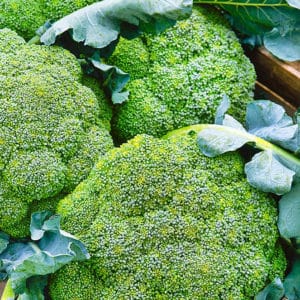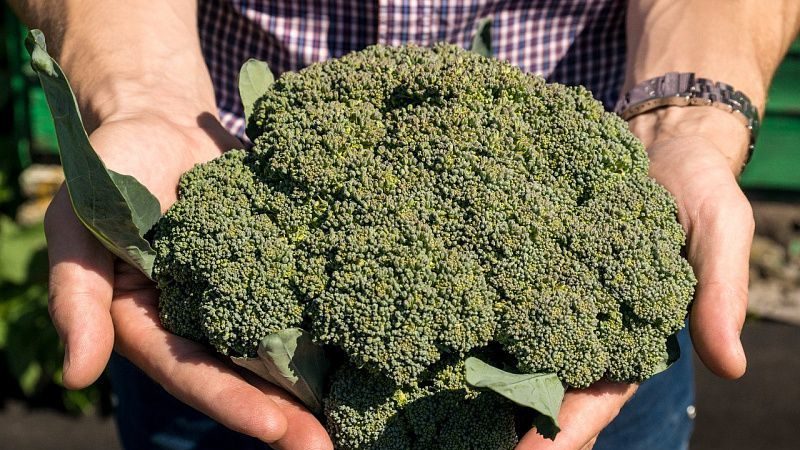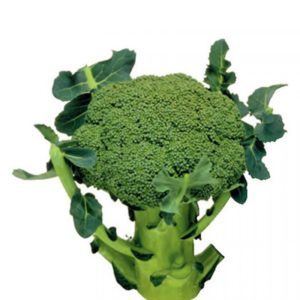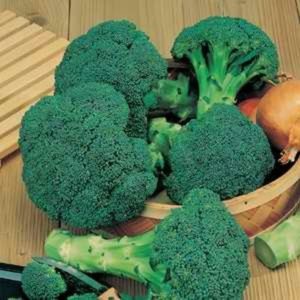High-yielding late hybrid of broccoli cabbage Marathon f1
Broccoli is the ancestor of cauliflower, but more useful due to its increased content of vitamins and minerals. The culture is unpretentious, and numerous varieties and hybrids make it easy to grow this vegetable in the garden. The Marathon F1 hybrid is considered one of the best.
Description of the broccoli hybrid Marathon F1
The Mediterranean region is considered to be the birthplace of broccoli, from where it spread throughout the world. Modern breeders have developed numerous crop hybrids that are characterized by increased yield and disease resistance.
Reference. Marathon F1 is also a hybrid. It was bred by Japanese breeders from Sakata.
The popularity of this hybrid is explained by its high taste and beneficial properties:
- The vegetable is high in protein and low in fiber, so it is often used for preparing dietary dishes.
- Broccoli contains vitamins C and E, as well as potassium, calcium, chromium, magnesium and phosphorus.
- Regular consumption of such cabbage helps speed up recovery and has a beneficial effect on overall health due to folic acid, choline and methionine.
- Sulforaphane is another important component of Marathon cabbage. It has antibacterial properties and accelerates the regeneration of mucous membranes.
Hybrid Marathon F1 is considered universal. It is suitable for steaming, frying and baking. Its forks are tight, so the vegetable can be freeze or store fresh in a cool basement.
Other features of the hybrid:
- Late ripening. Forks reach technical maturity 110 days after emergence.
- High yield. On average from 1 sq. m of beds yield 3 kg of vegetables, but with proper care the yield can be higher.
- Resistance to diseases and pests. The crop is resistant to major diseases and pests of cruciferous crops, but in some cases the forks can be attacked by caterpillars. To prevent them from eating the cabbage before it ripens, the bed is covered with a special covering material - lutrasil.
- Cold resistance. The hybrid tolerates cold and sudden temperature changes well, but during heat or drought its yield decreases.
Externally, Marathon F1 cabbage is practically no different from other varieties of broccoli. The color of the heads of cabbage ranges from green to blue-green. A ripe head of cabbage is dense, but loose, shaped like an ellipse, and its weight reaches 800 g. The average length of a ripe head of cabbage is 20 cm. The bushes themselves are powerful.
Since the Japanese hybrid is a late hybrid and tolerates cold better than heat, it is better grow in temperate climates. It is suitable for the Moscow region, the Urals and Siberia, but cultivation is only possible by the seedling method.
Advantages and disadvantages
When creating a hybrid, breeders managed to improve some of its characteristics. Due to this, it is popular among farmers around the world.
The main advantages of Marathon F1:
- High yield. For most late-ripening hybrids it is lower and does not exceed 2.5 kg of vegetables per 1 sq. m.
- Versatility. Dense and loose forks are great for cooking, freezing and long-term storage.
- Taste qualities.Hybrid Marathon F1 has a delicate, pleasant taste, and the inflorescences remain elastic even after cooking.
The only drawback of the culture is heat intolerance. Because of this feature, its cultivation in the south does not bring abundant harvests.
Features of planting and growing
Broccoli Marathon F1 is grown only by seedlings. Theoretically, seedless cultivation is possible in warm climates, but this crop does not tolerate heat well, so this method is practically not used.
Reference. Seedlings are planted only in heated soil at the end of April or beginning of May. Accordingly, sowing seeds for seedlings begins in March.
Before sowing, the seeds are treated. This increases the germination and productivity of the crop. The seeds are sorted and the largest ones without mechanical damage are selected. They are soaked for 1 hour in a weak solution of potassium permanganate, and then slightly dried.
Sowing seeds for seedlings is carried out as follows:
- Planting material is placed in one large container or separate peat cups. In the second case, the seedlings will not have to be dived.
- The depth of the planting holes is no more than 1 cm. The seeds are laid out at a distance of 2-3 cm from each other and sprinkled with a thin layer of soil.
- The soil is moistened with a spray bottle, covered with film and placed in a well-lit place. When the first shoots appear, the cover is removed, and the soil continues to be moistened as it dries.
- Seedlings are planted in separate containers when they have 2-3 true leaves.
Seedlings are transplanted into open ground at the stage of 4-5 true leaves. Containers with seedlings are pre-moistened to make it easier to remove the plants.
Transplanting into open ground has nuances:
- Place. Broccoli is a light-loving crop, so choose a site that is sunny and protected from drafts.
- Priming. It is advisable to choose land with low soil acidity. If this is not possible, chalk or lime is scattered over the surface.
- Preparing the beds. Includes digging, removing weeds and fertilizing with compost.
- Landing scheme. The hybrid's bushes are spreading, so they need a lot of space to form large forks. When planting seedlings, a distance of 30 cm is left between individual plants, and 50 cm between rows.
Care
Despite the fact that broccoli is considered an unpretentious crop, it needs to be looked after during the growing season to get a rich harvest:
- The soil in the garden bed is periodically loosenedto increase the flow of oxygen and moisture to the root system. At the same time, weeds are removed and bushes are hilled.

- Water the cabbage generously and regularly – every 6-7 days in the morning or evening. The amount of liquid added is determined individually: the soil under the bush should be moistened to a depth of 12-15 cm. You can arrange drip irrigation in the garden bed or manually apply moisture at the root using a watering can. In hot weather, additional spraying of leaves is practiced.
- Fertilize the crop several times per season. The first time - 2 weeks after planting the seedlings. At this stage, plants need nitrogen, so mullein infusion (0.5 liters per 15 liters of water) mixed with urea (1 tsp) is used as a fertilizer. The second time the bushes are fed with saltpeter (1 matchbox of the substance is diluted in 10 liters of water) three weeks after the first application of fertilizers.The third feeding involves the use of potassium phosphate fertilizers (40 g of superphosphate, 20 g of ammonium nitrate and 10 g of potassium sulfate per 10 liters of water) and is carried out a month after the second.
Diseases and pests
The advantage of Marathon F1 broccoli is that it has a well-developed immunity to traditional cabbage diseases (black leg, mosaic, clubroot, white and dry rot), therefore Preventive or curative treatment with chemicals is usually not carried out.
In some cases, aphids or fleas settle on bushes. To repel pests, every 10 days the plants are sprayed with a weak infusion of onion or garlic (2 kg of crushed product is infused in 10 liters of water).
Difficulties in growing
Broccoli is not yet the most common crop in our gardens, so some people have problems growing it:
- The absence of side forks and a shallow central head indicate that the seedlings were planted too densely. To increase productivity, crops are thinned, leaving only the strongest plants.
- The central fork is small and does not tie for a long time. This problem arises if overgrown seedlings are planted in the garden. There is no way to fix this problem.
- Broccoli does not develop and withers away - the reason is the acidic soil. Such cabbage produces harvests only on neutral and slightly alkaline soils.
Harvest and storage
When harvesting broccoli, timing is extremely important. Unripe heads are unsuitable for storage and processing, and overripe ones bloom and can no longer be eaten.
Important! A visual criterion for cabbage to be ready for harvesting is the sprouting of leaves through the head.
There are other signs of technical maturity:
- The diameter of a ripe head of cabbage is about 10 cm.
- The mature head is deep green with closed buds. If the cabbage begins to turn yellow and the inflorescences begin to open, such forks are collected first and immediately eaten.
It is better to harvest early in the morning. Under the scorching sun, forks quickly fade. Cut them so that about 10 cm of the stem remains at the bottom. It is not recommended to dig up a bush by its roots or pick a vegetable.
The timing of harvesting depends on the region, but on average, forks are cut at the end of August or beginning of September. Over time, small lateral heads form on the bushes remaining in the garden bed, which are also eaten.
Fresh broccoli can be stored for no longer than a week. For long-term storage, cabbage is cut into inflorescences and frozen. The hybrid Marathon F1 is late, so it can be stored in a cool basement at a temperature no higher than +2°C. Each inflorescence is tightly wrapped in cling film and placed in a single layer in a wooden box with holes. Shelf life - no more than 8 months.
Tips and reviews from experienced gardeners
Many summer residents who have practical experience in growing Marathon F1 cabbage advise not to buy seedlings on the market, but to grow them themselves. Thanks to this, there will be confidence that the plants belong to this particular hybrid. In addition, the summer resident can independently control the development of seedlings and transplant them into open ground in time.
The unpretentiousness and high productivity of the hybrid are confirmed by the reviews of those who grew it.

Victoria, Voronezh: “We used to always buy broccoli at the store. They were afraid to grow it in the country because they considered it too capricious. As an experiment, I bought a bag of Marathon and grew seedlings.All the seedlings took root in the garden bed, and we managed to collect so many forks that now our entire freezer is filled with broccoli.”
Alexander, Astrakhan: “I have experience in growing different types of broccoli, but when I read reviews about the Marathon variety, I tried to plant it, and now I consider it the best among the late ones. It takes a long time to grow, but the taste is very delicate, and the inflorescences can be stored all winter.”
Conclusion
The variety of broccoli is great, but among the late hybrids Marathon F1 stands out. As growing experience shows, this crop is unpretentious in care, tolerates cold well and is characterized by high productivity, so it can be grown in the Moscow region and central Russia.